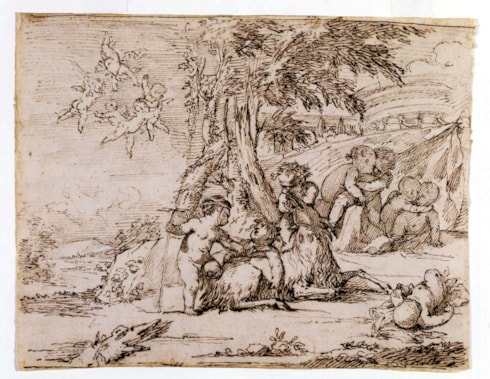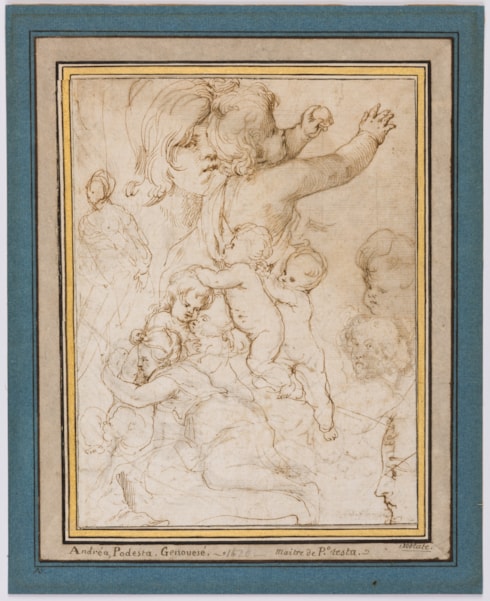
Giovanni Andrea PODESTA
Genoa 1608 - Genoa or Rome 1674
Biography
Relatively little is known of the early life and career of the Genoese artist Giovanni Andrea Podestà. He is thought to have trained in the studio of Giambattista Paggi in Genoa, sometime before 1627, where among his fellow pupils was Giovanni Benedetto Castiglione. He also studied with Domenico Fiasella and Giovanni Andrea de Ferrari, but very little is known of his activity in Genoa before he settled in Rome around 1636. Although he noted his Genoese origins when he signed his etchings, Podestà seems to have spent most of his career in Rome, becoming a member of the Accademia di San Luca in 1650. He is recorded as making drawings after the antique statues and reliefs in the Giustiniani collection in Rome, some of which were later engraved for the Galleria Giustiniana del Marchese Vincenzo Giustiniani, published in two volumes in 1636.
Podestà worked mainly as a printmaker, and etchings by him may be dated between 1636 and 1661. His first dated print, an etching after Titian done in 1636, is dedicated to the eminent scholar, antiquary, collector and patron Cassiano dal Pozzo. Indeed Podestà, like Castiglione, may be included among a group of artists working in Rome, including Nicolas Poussin and Pietro Testa, nurtured and promoted by dal Pozzo. Podestà is also noted as one of the people responsible for compiling the inventory of Cardinal Mazarin’s collection of paintings, following his death in 1661. Although Podestà is best known as a printmaker, a handful of paintings of bacchanals with putti, considered in the past to be the work of Poussin or Testa, have also been tentatively attributed to him; these are today mainly to be found in French collections.
Almost all of Podestà’s etchings, as well as his few surviving drawings, depict landscapes filled with frolicking putti, inspired by the bacchanals of both Titian and Poussin. Only a handful of drawings by Podestà - described by one scholar as ‘rapid, fresh and immediate sketches of putti which the Genovese artist used repeatedly both in his paintings and in his etchings’ – are known.



